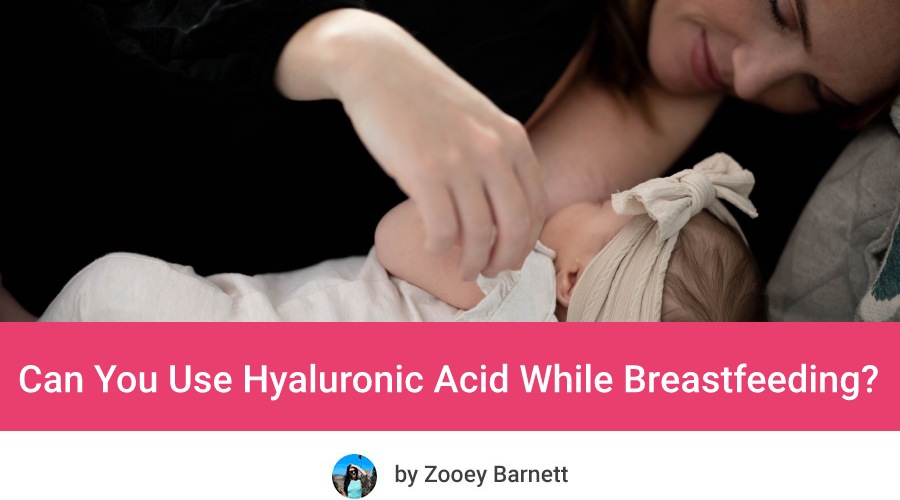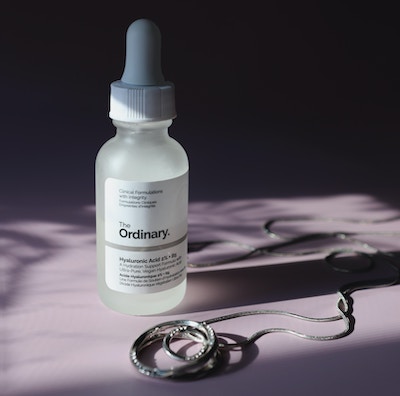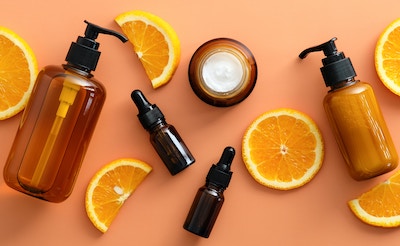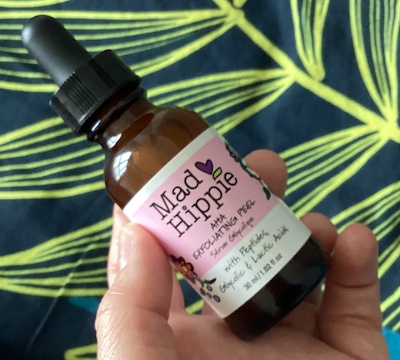
Breastfeeding, especially for first-time mothers, is an exciting phase of the motherhood journey, but can be also quite stressful. It does come with its own challenges that every breastfeeding mom faces.
Aside from the common concerns, like shallow latch issues or painful and sore nipples that you may be struggling with, it is also important to consider what ingredients you can and cannot use on your skin during this fundamental time.
One such ingredient is hyaluronic acid. Its benefits for skin hydration and anti-aging are well known, but can it be safely used while breastfeeding?
Because it has ‘acid’ in its name, some people think it can be dangerous, but the truth is that hyaluronic acid can be safely used when you’re breastfeeding.
Here, I will tell you everything about the safety of hyaluronic acid for both pregnant and breastfeeding women, as well as their nursing babies. I will also share with you my tips on how to incorporate this ingredient into your skincare routine in the safest way!
This article is not a substitute for medical advice or consultation.
What Is Hyaluronic Acid & What Are Its Benefits
Hyaluronic acid is a naturally occurring substance found all over the body, particularly in the skin and eyes. It has become a very popular ingredient to include in skincare products such as moisturizers and serums, since it is gentle and non-irritating and works well with other skincare ingredients.
Hyaluronic acid is also known for its exceptional water-holding capacity, which is why it is so effective in skincare. In fact, hyaluronic acid can hold up to 1000 times its weight in water! This helps to keep the skin hydrated, plump, and supple.
The other benefits of hyaluronic acid include:
- Soothing: Hyaluronic acid has anti-inflammatory properties that can help soothe and calm the skin, making it a popular ingredient for those with sensitive or easily irritated skin types.
- Anti-aging: As we age, the levels of collagen and hyaluronic acid found naturally in our skin decrease, which is why we develop wrinkles. Adding hyaluronic to your skincare routine could replenish the skin’s natural stores of this vital ingredient and help you to maintain a more youthful complexion. The plumping effects of hyaluronic acid can also help to improve the appearance of these fine lines and wrinkles.
- Improved skin tone and texture: Hyaluronic acid can help improve skin texture and tone by hydrating the skin, making it look smoother and more supple.
Does Hyaluronic Acid Have Any Side Effects?
Hyaluronic acid is generally considered to be a very safe ingredient that is well-tolerated by all skin types. Side effects are very rare.
However, in these rare cases, individuals may experience mild effects such as redness or itching, dryness, or breakouts, particularly if they have sensitive skin or are using a high concentration of the ingredient. In even rarer cases, individuals may experience an allergic reaction to the substance, which can cause more severe symptoms like swelling or hives.
It’s important to remember that these side effects are typically mild and temporary, and most people are able to use hyaluronic acid in their skincare routine without any issues.
If you experience any persistent or severe side effects after using a hyaluronic acid product, you should discontinue use and consult a healthcare professional immediately.
Is Hyaluronic Acid Safe To Use During Pregnancy?
Although there is limited research available on the safety of hyaluronic acid during pregnancy, it is generally considered safe for expecting mothers to use1.
This is because hyaluronic acid is a natural substance in the body and is unlikely to be absorbed into the bloodstream in significant amounts when applied topically (which would later be passed on to the fetus).
If you do choose to use a skincare product containing hyaluronic acid during pregnancy, then it is crucial to choose a product that is free from other potentially harmful ingredients for pregnant women, such as retinoids, salicylic acid, or benzoyl peroxide.

Hyaluronic Acid & Breastfeeding – Is It Safe?
And now for the question we’re all here for – is hyaluronic acid safe to use while you are breastfeeding? The answer is yes, absolutely, hyaluronic acid is safe to use during breastfeeding2.
While it is only natural to be overly cautious about the products you use on your skin while breastfeeding, you can rest easy knowing that hyaluronic acid is not an ingredient that you need to be concerned about.
The “acid” tied to the word may scare some breastfeeding women, but the substance itself is very gentle and naturally found in the body.
When applied topically, hyaluronic acid is unlikely to even be absorbed into the body, and hence unlikely to pass through breast milk in quantities that would pose a risk to a nursing infant.
Currently, there are some studies in a progress that should determine if hyaluronic acid can be used for healing cracked nipples in breastfeeding mothers3. It’s very important for such studies to be conducted so we could learn more about HA usage by nursing moms.
It is also important to note, that hyaluronic acid fillers, which are injected into the skin for cosmetic purposes, are not recommended during breastfeeding, since the potential risks to the baby are not well understood. If you are considering any cosmetic procedures while breastfeeding, you may want to first discuss the potential risks and benefits with a healthcare professional.
Reasons To Use Hyaluronic Acid As A Breastfeeding Woman
Now that you know that it is safe to use hyaluronic acid while breastfeeding, you may be wondering why you would want to use it in the first place. Well, there are many benefits to the ingredient, the general ones listed before just being a few of them.
First of all, many women experience significant hormonal changes while pregnant and breastfeeding that can affect the skin’s moisture levels, making it more prone to dryness and dehydration.
Hyaluronic acid is known for its ability to strengthen the skin barrier and for its excellent humectant properties, which is ideal for skin that has become dehydrated or itchy due to pregnancy.
The second thing is that the stretching of the skin that occurs during and post-pregnancy can lead to diminished skin elasticity and stretch marks.
Hyaluronic acid may be able to help improve the appearance of these by controlling inflammation in the skin and boosting collagen production. It can also plump up your fine lines and wrinkles.
Lastly, hyaluronic acid’s compatibility with other skincare ingredients makes it a hassle-free and easy ingredient for busy, breastfeeding mamas to turn to.
In fact, it is not only safe to use with most other skincare ingredients, but it may even enhance their effectiveness.

Tips For Applying Hyaluronic Acid In A Safe Way
Here are some tips on how to safely apply hyaluronic acid, in general and while breastfeeding:
- Patch test
Before using hyaluronic acid on your entire face, do a patch test on a small area of your skin to check for any adverse reactions or allergies.
- Use the right amount
Hyaluronic acid should be used in small amounts, since using too much is wasteful and, in rare cases, can cause irritation. A pea-sized amount should be enough to cover your entire face.
- Apply on damp skin
This is an important step, since applying hyaluronic acid to dry instead of damp skin can be dehydrating. This is because hyaluronic acid is a humectant, which means that it absorbs water from the environment.
If there is not enough water on the skin’s surface, it can absorb water from the deeper layers of the skin, making it even dryer! After cleansing your skin, pat it dry with a towel and apply your hyaluronic acid product while your skin is still slightly damp.
- Keep clear of the breast area
While topical hyaluronic acid may be safe for use while breastfeeding, it is not recommended that you apply it, or any skincare product for that matter, near your breasts or nipples unless it is a breastfeeding-friendly nipple cream. This is to prevent your baby from ingesting it or absorbing the product through their skin.
- Choose the right formula
Hyaluronic acid comes in different formulations such as serums, creams, or sheet masks. Choose a formula that works best for your skin type and concerns.
- Follow up with a moisturizer
To optimize the effectiveness of a hyaluronic acid serum, follow up with a rich moisturizer. This will lock in the moisture and prevent evaporation.
Can I Use Hyaluronic Acid With Retinol While Breastfeeding?
Skincare experts and dermatologists agree that hyaluronic acid is safe for breastfeeding and pregnant women, but what about retinol? Is it safe to use them together while breastfeeding? The short answer is no, absolutely not. Steer away from retinol while breastfeeding.
A derivative of vitamin A, retinol is an ingredient found in topical skincare products or oral prescriptions for acne (such as isotretinoin or Accutane). It is widely used in anti-aging products and is known for its ability to improve the appearance of fine lines, wrinkles, and skin texture.
While the amount of retinol absorbed by the skin from topical products is likely low, birth defects have been linked to higher doses of the ingredient.
For the safety of the mother and baby, all doctors strongly recommend avoiding all forms of vitamin A while pregnant and breastfeeding.
If you’re not pregnant or breastfeeding, however, and you have no other underlying issues or compromised skin, then using hyaluronic acid with retinol is perfectly safe. Retinol will work to exfoliate and smooth the skin, while hyaluronic acid will provide the much-needed moisture the skin craves after the application of retinol.
What Acids Can Be Used While Breastfeeding?
According to dermatologists and other medical professionals, as well as current research, these acids are breastfeeding-friendly:
Ascorbic Acid (aka Vitamin C Serum)
Also known as ascorbic acid, vitamin C is an antioxidant that offers several benefits for many skin concerns. It helps brighten the complexion, improve skin tone, stimulate collagen production, and protect the skin against environmental damage.
Vitamin C is found in various skincare products, including serums, moisturizers, and face masks, and is typically safe for most skin types. It is important to choose stable forms of vitamin C, such as L-ascorbic acid or its derivatives, since they are more effective and better tolerated by the skin4.
Luckily, when applied topically, vitamin C is minimally absorbed into the bloodstream, making it unlikely to have any effects on breast milk or a breastfeeding infant.

Glycolic Acid
Glycolic acid is a type of alpha hydroxy acid (AHA) derived from sugarcane. It is a popular ingredient in skincare products and is known for its exfoliating properties and ability to improve the appearance and texture of the skin.
Glycolic acid works by loosening the bonds between dead skin cells on the surface of the skin, and promoting more radiant complexion.
This process helps to unclog pores, smooth rough skin, and improve overall skin tone. It can also help to diminish the appearance of fine lines, wrinkles, and hyperpigmentation over time.
Glycolic acid is generally considered safe for use by pregnant and nursing mothers, at least at low concentrations5.
Lactic Acid
Lactic acid is a type of alpha hydroxy acid (AHA) that is commonly used in skincare products for its exfoliating and skin-renewing properties. It is derived from milk or fermented vegetables or is synthetically produced.
In skincare, lactic acid functions as a chemical exfoliant. It works similarly to glycolic acid, breaking down the bonds between skin cells on the surface of the skin and facilitating the revealing of newer, brighter skin underneath.
One of the advantages of lactic acid compared to other AHAs is that it tends to be way more gentle on the skin. It has larger molecules, which means that it penetrates the skin more slowly.
This makes it is a great option for those with sensitive or easily irritated skin who may not be able to handle stronger AHAs like glycolic acid.
It is considered to be safe for topical use while breastfeeding6.

Mandelic Acid
Mandelic acid is derived from bitter almonds and is one of the gentlest of the alpha hydroxy acids.
This is because it has a larger molecular size compared to other AHAs, meaning that it penetrates the skin slower and causes less irritation. It is also less acidic than the other AHAs, making it a gentler option for those with skin that is prone to irritation.
It has become a popular ingredient in skincare products due to its ability to exfoliate the skin and improve skin texture and tone. It is generally considered to be safe for use while breastfeeding7.
Azelaic Acid
Azelaic acid – the golden child of the skincare world at the moment. This multi-powerhouse ingredient is derived from grains such as wheat, rye, and barley, or produced synthetically, and is an excellent choice for those with sensitive skin.
It works to brighten, calm and improve the appearance of the skin, while also treating acne and hyperpigmentation. It truly does it all, and is thankfully considered safe to use while pregnant and breastfeeding, but only on small skin surfaces. It’s best to avoid it in the first trimester8.
What Acids Should Be Avoided While Breastfeeding?
Just as you need to avoid certain foods and drinks while pregnant and nursing, there are also some skincare ingredients that should not be used during this time. Here are just a few of the acids that should rather be left out of your skincare routine while you are breastfeeding:
- Salicylic Acid: While salicylic acid is generally considered safe when used in low concentrations, it’s advisable to avoid high concentrations or prolonged use during breastfeeding. This is mainly due to the potential risk of increased absorption through the skin9.
- Chemical Peels: Although evidence is limited, it is recommended to exercise caution with the high concentrations of acids present in chemical peels during breastfeeding due to the potential absorption into your bloodstream and potential risks to the baby. This is especially true for chemical peels containing beta hydroxy acid (BHA) or trichloroacetic acid (TCA).
- Hyaluronic acid fillers: Although the use of topical hyaluronic acid is considered perfectly safe while breastfeeding, hyaluronic acid fillers (like what you would get injected into your lips) are more of a grey area. Because there is such limited data on these injectables and their effects on breast milk, it is advised to err on the side of caution and avoid them.
Always remember that individual sensitivities and reactions can vary. While the risks associated with these ingredients during breastfeeding are considered minimal, it is advisable to consult with your healthcare provider and exercise caution when choosing beauty products during this period.
Your doctor or dermatologist can provide personalized advice based on your unique circumstances and help you make informed decisions that prioritize the safety of both you and your baby.
What Other Beauty Ingredients Should Be Avoided While Breastfeeding?
Here are some additional beauty ingredients that you should steer clear of if you are pregnant and breastfeeding:
- Hydroquinone
This skin-lightening agent is commonly used to treat hyperpigmentation. There is, however, limited information regarding its safety during breastfeeding, and skincare experts agree it is best to avoid it if you want to be on the safe side10.
- Parabens
Parabens are preservatives commonly found in skincare, haircare, and cosmetic products. There is evidence linking parabens to skin irritation, cancer, and endocrine disruption.
Studies show that parabens can act like estrogen in the body and disrupt the normal function of hormone systems, having negative effects on reproductive development, fertility, and even birth outcomes11.
It is possible then that parabens may also have negative effects during breastfeeding. No wonder medical professionals advise against the use of parabens, not only during breastfeeding, but in general.
- Formaldehyde & Formaldehyde Releasing Agents
Formaldehyde and certain formaldehyde-releasing preservatives, such as DMDM hydantoin and diazolidinyl urea, are sometimes used in hair straightening treatments, nail products, and other cosmetics. These ingredients may be harmful, and it’s advisable to avoid them while breastfeeding.
- Phthalates
Phthalates are chemicals commonly used as plasticizers in various products, including fragrances, cosmetics, and personal care items. While limited research is available on their specific effects during breastfeeding, some studies hint at potential concerns, and so it may be best to avoid products containing them until we have more data in the future.
- Synthetic Fragrances
Synthetic fragrances are commonly used in many beauty and personal care products. They can contain a mixture of potentially harmful chemicals, and while there is no direct evidence of their harm during breastfeeding, it’s advisable to opt for fragrance-free or naturally scented products to minimize any potential risks.
- Chemical Sunscreens
Certain chemical sunscreens, such as oxybenzone, avobenzone, and octinoxate, have been found to have the potential to enter the bloodstream.
Although the levels absorbed are generally low, it is recommended to use physical (mineral) sunscreens containing ingredients like zinc oxide or titanium dioxide instead, if you are pregnant or breastfeeding (or actually always if you care for your skin and the planet!).
Do I Need to Change My Skincare Routine While Breastfeeding?
Pregnant and breastfeeding moms are going through the most, and it is natural to have questions about the ingredients in your skincare products. Thankfully, breastfeeding your baby does not mean that you can’t enjoy your skincare routine and see results from it.
While there are admittedly a few ingredients to stay away from, most skincare products are still safe to use.
All you really need to do to baby-proof your existing routine is check the ingredients closely and make a few substitutions based on that.
You may also want to add a nice, extra-thick moisturizer and some extra protection.
The purpose of this article is informative. It’s not a substitute for professional medical advice or medical care. Remember: safety first! Consult your doctor/pediatrician in case of any doubts. The author of this article does not accept any responsibility for any liability, loss or risk, personal or otherwise, incurred as a consequence, directly or indirectly, from any information or advice contained here.
Resources:
https://www.verywellfamily.com/
https://clinicaltrials.gov/
https://asianbeautyessentials.com/
https://www.dermalogica.com/
https://www.ncbi.nlm.nih.gov/
https://procoal.co.uk/
https://www.healthline.com/
https://www.theskincareclinic.com.au/
https://www.ewg.org/

